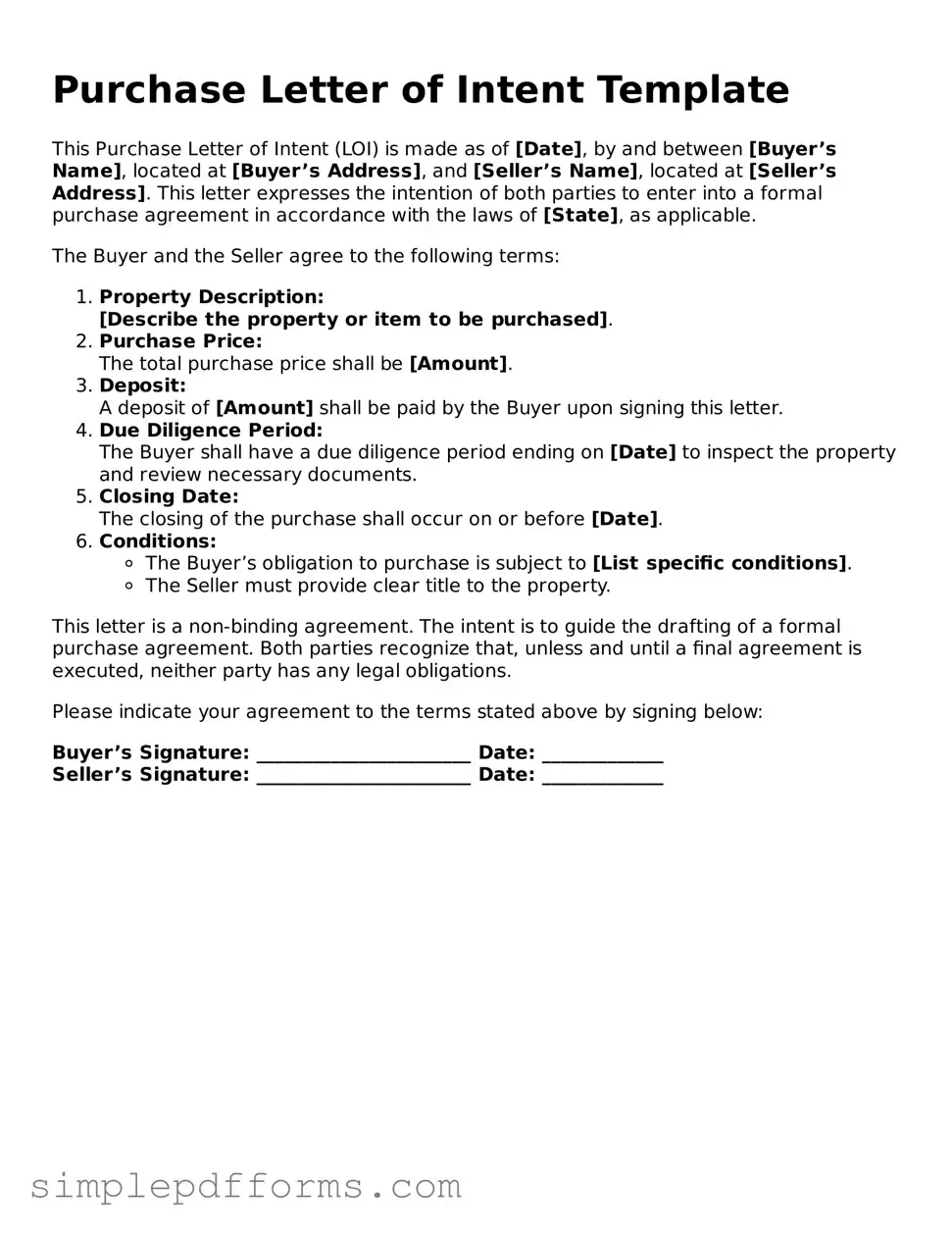Purchase Letter of Intent Template
This Purchase Letter of Intent (LOI) is made as of [Date], by and between [Buyer’s Name], located at [Buyer’s Address], and [Seller’s Name], located at [Seller’s Address]. This letter expresses the intention of both parties to enter into a formal purchase agreement in accordance with the laws of [State], as applicable.
The Buyer and the Seller agree to the following terms:
- Property Description:
[Describe the property or item to be purchased].
- Purchase Price:
The total purchase price shall be [Amount].
- Deposit:
A deposit of [Amount] shall be paid by the Buyer upon signing this letter.
- Due Diligence Period:
The Buyer shall have a due diligence period ending on [Date] to inspect the property and review necessary documents.
- Closing Date:
The closing of the purchase shall occur on or before [Date].
- Conditions:
- The Buyer’s obligation to purchase is subject to [List specific conditions].
- The Seller must provide clear title to the property.
This letter is a non-binding agreement. The intent is to guide the drafting of a formal purchase agreement. Both parties recognize that, unless and until a final agreement is executed, neither party has any legal obligations.
Please indicate your agreement to the terms stated above by signing below:
Buyer’s Signature: _______________________ Date: _____________
Seller’s Signature: _______________________ Date: _____________
